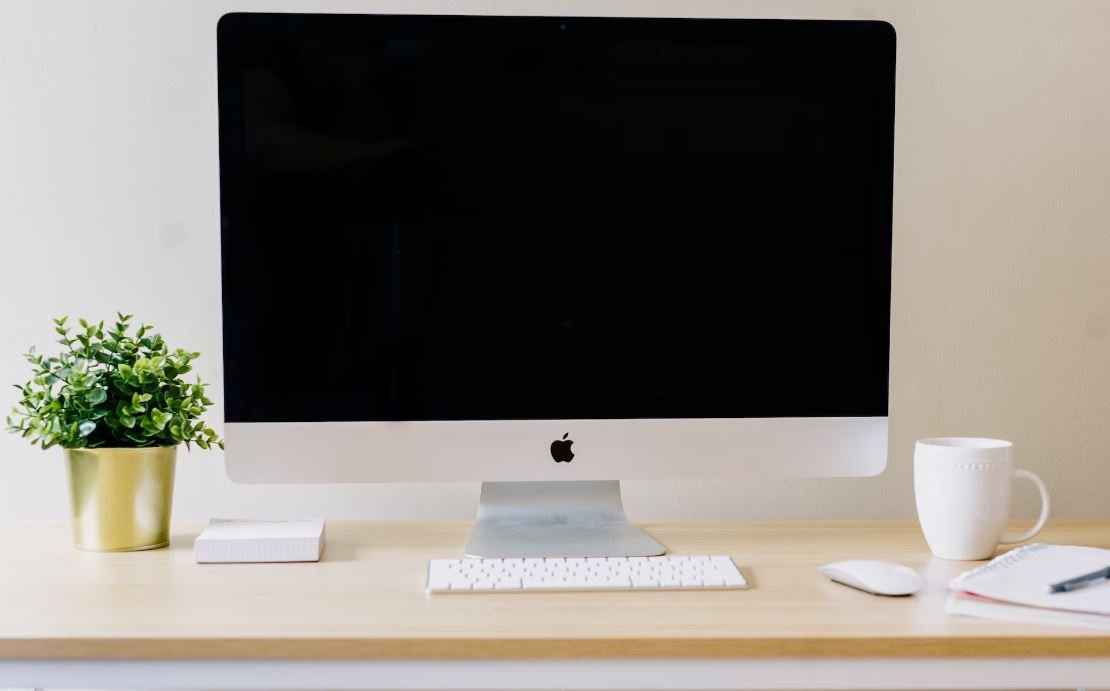Film Emulation
Film emulation is a technique that simulates the look and feel of traditional film types in digital photography and filmmaking. It has gained popularity among photographers and filmmakers who want to replicate the distinctive characteristics of various film stocks without shooting on actual film. This article explores the concept of film emulation, its benefits, and how it can be achieved.
Key Takeaways
- Film emulation replicates the look and feel of traditional film types in digital photography and filmmaking.
- It allows photographers and filmmakers to imitate the unique characteristics of specific film stocks without using actual film.
- Film emulation techniques can be applied using software applications and plugins.
- There are various film emulation presets available, each mimicking the characteristics of different films.
- Film emulation can add a nostalgic and artistic touch to digital images and videos.
The Basics of Film Emulation
Film emulation involves applying presets or filters to digital images or videos to mimic the appearance of specific film stocks. These presets, also known as LUTs (Look-Up Tables), adjust the colors, contrast, and grain in the digital files to replicate the characteristics of analog film. Software applications and plugins like Adobe Lightroom, Capture One, and VSCO are commonly used to apply these presets.
**Film emulation provides photographers and filmmakers with the ability to recreate the unique qualities of different films, such as the vibrant colors of Kodak Portra, the high contrast of Ilford Delta, or the vintage look of Kodak Tri-X.** The presets adjust the color profiles and overall tonality of the digital files to match the intended film stock. By simulating film, photographers and filmmakers can evoke a specific mood or style, adding depth and character to their work.
*For example, a cinematographer using film emulation techniques could evoke the classic 1970s aesthetic of films like “The Godfather” by applying a preset that mimics the characteristics of Kodak Ektachrome or Fujifilm Velvia. This emulation can create a nostalgic and visually appealing atmosphere that enhances the storytelling.*
How Film Emulation Works
**Film emulation works by analyzing the color and tonal characteristics of specific film stocks and creating a mathematical formula, known as a Look-Up Table (LUT), **which can then be applied to digital images or videos. The LUT adjusts the color channels, brightness, contrast, and other parameters to match the look of the chosen film stock. Instead of using a “one size fits all” approach, modern film emulation techniques offer a wide array of presets designed to mimic the subtleties of different films.
There are several popular film emulation software applications and plugins available that offer customizable options to fine-tune the results. These tools allow photographers and filmmakers to adjust the intensity of film characteristics such as grain, color saturation, and vignetting, providing a high level of control over the emulation process.
Film Emulation in Practice
Photographers and filmmakers can achieve film emulation in a few simple steps:
- Select the desired film emulation preset or LUT based on the intended look and feel.
- Apply the preset to the digital image or video file using software applications like Adobe Lightroom or Final Cut Pro.
- Adjust the parameters to fine-tune the emulation, such as grain intensity or color saturation.
- Export the final image or video with the film emulation applied.
Examples of Popular Film Emulation Presets
Table 1 showcases some of the popular film emulation presets available in the market:
| Film Stock | Film Emulation Preset |
|---|---|
| Kodak Portra | VSCO Film Pack – Portra 400 |
| Kodak Tri-X | Silver Efex Pro – Tri-X 400 |
| Ilford HP5 | Alien Skin Exposure – Ilford HP5 |
Table 2 demonstrates the adjustments that film emulation can bring to digital images or videos:
| Adjustment | Effect |
|---|---|
| Color Temperature | Warm or cool the overall image |
| Grain | Add film-like texture and noise |
| Contrast | Enhance or soften the image’s range of tones |
| Vignetting | Create a darkened or faded edge effect |
The Importance of Film Emulation
Film emulation has become an indispensable tool for photographers and filmmakers who seek to replicate the aesthetics of traditional film. By imitating the look and feel of specific film stocks, digital artists can evoke a sense of nostalgia or create unique artistic styles. Film emulation allows for the exploration of different cinematic looks without the need for expensive equipment or extensive post-processing. Furthermore, it provides a means of paying homage to the rich history and visual charm of analog film photography and cinematography.
*Film emulation is not limited to recreating the past; it also enables photographers and filmmakers to experiment with new creative possibilities. By combining the characteristics of different film stocks or adjusting the parameters of the emulation, unique and original looks can be achieved that were not possible with traditional film alone.*
Whether for professional use or personal projects, film emulation offers a versatile and powerful tool to enhance digital imagery and video production. Photographers and filmmakers can leverage these techniques to bring their creative visions to life, expanding their storytelling capabilities and captivating audiences with visually striking results.

Common Misconceptions
Misconception 1: Film emulation is the same as applying a filter
One common misconception about film emulation is that it is simply applying a filter to a photograph or video footage. However, this is not entirely accurate. Film emulation involves recreating the look and feel of a specific film stock, including its unique color palette, grain structure, and tonal range. It is more than just a simple filter overlay.
- Film emulation involves recreating the overall aesthetic of a specific film stock.
- Filters usually focus on altering the overall color or contrast, while film emulation aims to replicate the characteristics of an actual film stock.
- Applying a filter may change the appearance of a photo or video, but it does not necessarily capture the essence of a specific film’s look.
Misconception 2: Film emulation is only for vintage or old-fashioned looks
Another misconception is that film emulation is solely used to achieve vintage or old-fashioned looks. While it is true that film emulation is often utilized to replicate the look of classic film stocks, it can also be utilized to recreate contemporary film aesthetics or even to explore creative expressions beyond traditional film looks.
- Film emulation can be used to create a variety of looks, from vintage to modern.
- Contemporary films are often emulated to replicate their distinct visual style.
- Film emulation can also be used artistically to create unique and experimental looks.
Misconception 3: Film emulation is a shortcut to achieving film-like visuals
Some people believe that using film emulation is a shortcut to instantly achieve film-like visuals without having to learn the intricacies of traditional film photography or cinematography. However, film emulation is a tool that aids in replicating the characteristics of film, but it does not replace the knowledge, skills, and experience of working with actual film.
- Using film emulation requires understanding the nuances of different film stocks.
- Working with actual film involves considerations like exposure, film development, and scanning techniques.
- Film emulation can enhance the digital workflow but does not replace the need for fundamental knowledge in photography or cinematography.
Misconception 4: Film emulation is only for professionals
One misconception is that film emulation is only for professional photographers or filmmakers. While professionals may often utilize film emulation techniques, it is not limited to them. Anyone with access to photo editing software or video editing tools can experiment with film emulation to enhance their visual creations.
- Film emulation tools are accessible to hobbyists, enthusiasts, and amateurs as well.
- Many photo editing apps and software offer built-in film emulation presets for casual users.
- Experimenting with film emulation can be an enjoyable way to explore different visual aesthetics and styles.
Misconception 5: Film emulation replaces the need for shooting on actual film
Finally, there is a misconception that film emulation completely replaces the need for shooting on actual film. While film emulation can replicate the look of different film stocks, it cannot fully replicate the entire experience and unique characteristics that shooting on actual film provides.
- The physical attributes of film, such as its distinct grain structure, are difficult to replicate entirely in digital emulation.
- Film enthusiasts and professionals still appreciate the unique qualities and nostalgic value of shooting on actual film.

Overview of Film Emulation
Film emulation is the technique of replicating the look and feel of analog film in digital photography and videography. This process has gained popularity among photographers and filmmakers who appreciate the nostalgic aesthetic of traditional film. In this article, we explore various aspects of film emulation and examine its influence on the digital media landscape. The following tables provide interesting data and points related to this topic.
Table: Top 10 Film Emulation Software
Explore the most popular film emulation software used by photographers and filmmakers:
| Software | Features | Price (USD) |
|---|---|---|
| VSCO | Large selection of film presets | Free (with in-app purchases) |
| DxO FilmPack | Accurate film renderings | $79.99 |
| Alien Skin Exposure | Extensive editing capabilities | $149 |
| Nik Collection Analog Efex | Realistic film-like effects | $149.99 |
| Mastin Labs | Precise emulation of specific films | $99 |
| CameraBag | Simple, intuitive interface | $49 |
| RNI Films | Authentic grain and colors | $99 |
| Replichrome | High-quality film presets | $99 |
| LXC | Vintage look and feel | $99 |
| Color Efex Pro | Wide range of film-like filters | $149.95 |
Table: Advantages of Film Emulation
Discover the benefits of using film emulation in digital media:
| Advantage | Description |
|---|---|
| Nostalgic Aesthetic | Replicates the classic film look |
| Timeless Appeal | Eternalizes moments in a timeless style |
| Artistic Expression | Allows photographers/filmmakers to convey a specific mood |
| Consistency | Maintains consistent color grading across a project |
| Attention to Detail | Preserves grain, imperfections, and character of film |
Table: Evolution of Film Emulation
Discover the timeline of film emulation innovations:
| Year | Development |
|---|---|
| 1970s | Introduction of early film presets in darkrooms |
| 1990s | Emergence of dedicated film emulation software |
| 2000s | Advancements in digital technology for film simulation |
| 2010s | Increased realism and accuracy in film emulation |
| 2020s | Integration of film emulation into smartphone apps |
Table: Film Emulation vs. Film Photography
Compare the key differences between film emulation and traditional film photography:
| Aspect | Film Emulation | Film Photography |
|---|---|---|
| Cost | Inexpensive (once software is acquired) | Expensive (film rolls, processing, and printing costs) |
| Workflow | Fast and flexible digital post-processing | Time-consuming manual processing |
| Feedback | Instant preview and adjustments | Await film development and printing |
| Physical Medium | Digital files and online sharing | Tangible prints and negatives |
| Learning Curve | Accessible with tutorials and online resources | Requires hands-on experience and technical knowledge |
Table: Film Emulation Effects
Explore common film emulation effects and their characteristics:
| Effect | Description |
|---|---|
| Grain | Replicates the texture and appearance of film grain |
| Vignetting | Darkening or fading of corners, creating focus on the center |
| Faded Colors | Mimics the natural fading of colors over time |
| Light Leaks | Simulates accidental exposure of light to film |
| Contrast | Enhances or reduces the contrast in a scene |
Table: Popular Film Emulation Presets
Discover some renowned film presets:
| Presets | Original Film | Description |
|---|---|---|
| Kodak Portra | Kodak Portra | Soft, pastel tones with fine grain structure |
| Fuji Velvia | Fujifilm Velvia | Richly saturated colors, especially in nature |
| Ilford HP5 | Ilford HP5 Plus | Classic black and white aesthetic with distinct contrast |
| Polaroid | Polaroid | Simulates the instant film experience |
| Agfa Vista | Agfa Vista | Bright and vibrant overall look |
Table: Film Emulation in Mainstream Media
Discover some notable examples of film emulation in popular films and TV shows:
| Title | Description |
|---|---|
| Stranger Things | Emulates the look of 1980s horror movies |
| The Grand Budapest Hotel | Recreates the visual aesthetic of old European films |
| Blade Runner 2049 | Evokes the futuristic yet gritty style of classic dystopian films |
| Drive | Imitates the vibrant colors and neon-lit cinematography of 1980s films |
| La La Land | Recalls the golden era of musical films through its color palette |
Conclusion
Film emulation has revolutionized digital media by enabling photographers and filmmakers to recreate the distinct look and feel of analog film. Through a variety of film emulation software options, artists can achieve a nostalgic aesthetic, timeless appeal, and convey their artistic expression effectively. The advantages of film emulation, such as consistency and attention to detail, have made it a popular choice in the digital media landscape. Whether it’s for personal projects or mainstream productions, film emulation offers a powerful tool for creative expression.
Frequently Asked Questions
Question 1: What is film emulation?
Film emulation is a process used in digital photography and video editing to replicate the look and feel of traditional film stocks. It involves applying specific color profiles, grain patterns, and other characteristics of different film types to create a similar visual aesthetic.
Question 2: How does film emulation work?
Film emulation works by analyzing the color science, characteristics, and behavior of various film stocks. This information is then translated into digital algorithms and applied to digital images or footage, replicating the appearance of specific film stocks on a digital medium.
Question 3: What are the benefits of using film emulation?
Using film emulation can add a unique and nostalgic look to digital images and videos. It allows photographers and videographers to recreate the aesthetics of popular film stocks without the need for expensive and time-consuming film processing.
Question 4: Can film emulation be applied to any image or video?
Yes, film emulation can be applied to any digital image or video, whether it was originally shot with a digital camera or captured using traditional film. The process is done through software applications or plugins that support film emulation.
Question 5: Is film emulation limited to specific film stocks?
No, film emulation software and plugins provide a wide range of options and presets that cover various film stocks from different eras and manufacturers. This allows users to replicate the look of iconic films or create their own unique styles.
Question 6: Can I customize the settings of a film emulation?
Yes, most film emulation software and plugins offer extensive customization options. Users can adjust parameters like color balance, contrast, grain intensity, and other characteristics to achieve their desired look and feel.
Question 7: Can film emulation be combined with other editing techniques?
Absolutely! Film emulation is often used in combination with other editing techniques to further enhance and refine the final image or video. This could include adjustments to exposure, sharpness, cropping, or even creative filters.
Question 8: Are there any drawbacks to using film emulation?
While film emulation can recreate the look of traditional film, it doesn’t replicate the entire process. Film stocks have unique properties beyond color and grain, such as dynamic range and response to light, which may not be fully captured through emulation.
Question 9: Can film emulation be used for professional work?
Absolutely! Film emulation has become widely accepted in professional photography and videography. Many top photographers and filmmakers utilize film emulation to achieve specific visual aesthetics for their projects.
Question 10: Where can I find film emulation software or plugins?
There are numerous options available for film emulation software and plugins, both free and paid. Some popular choices include Adobe Lightroom, Capture One, and FilmConvert. Online marketplaces and software developer websites are great places to explore and discover different options.




